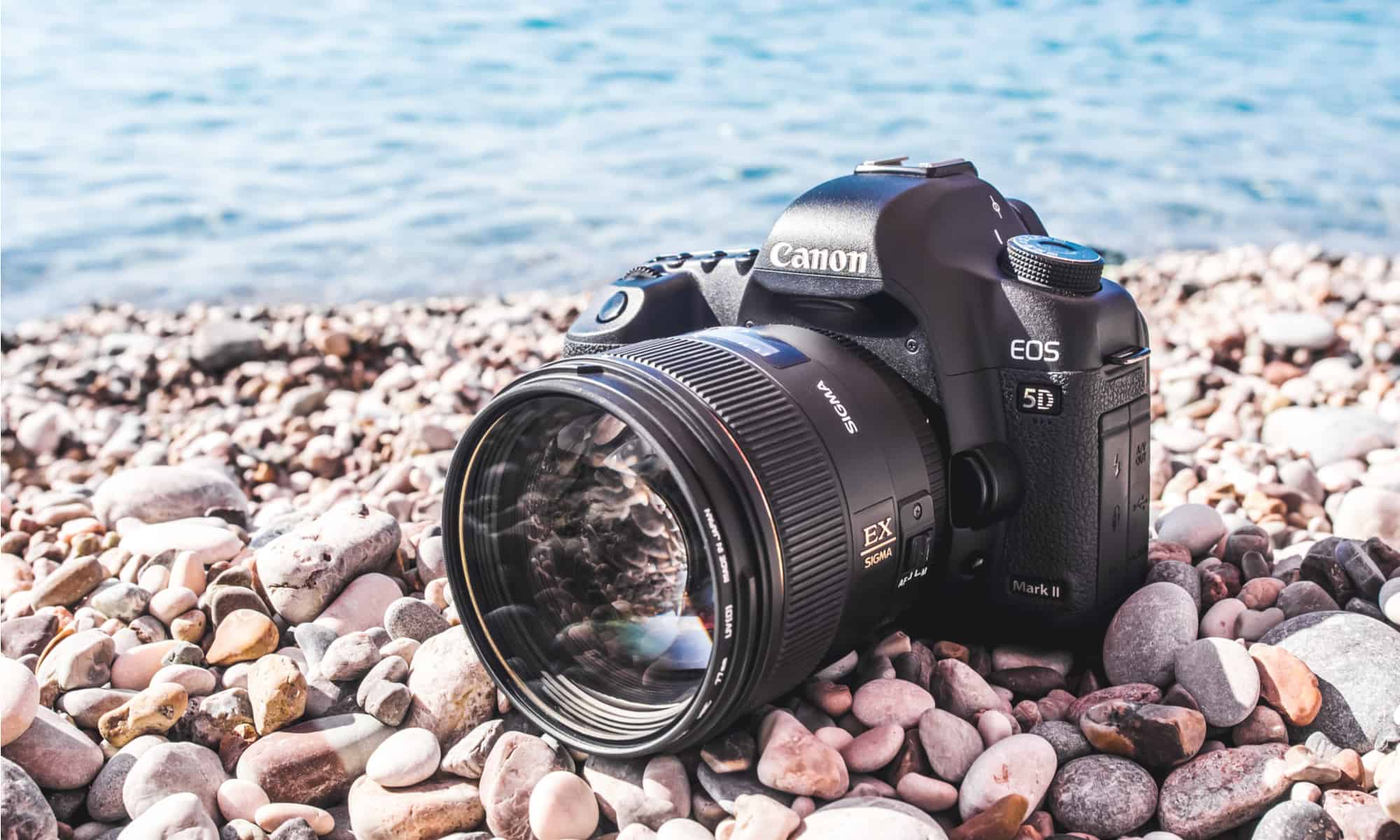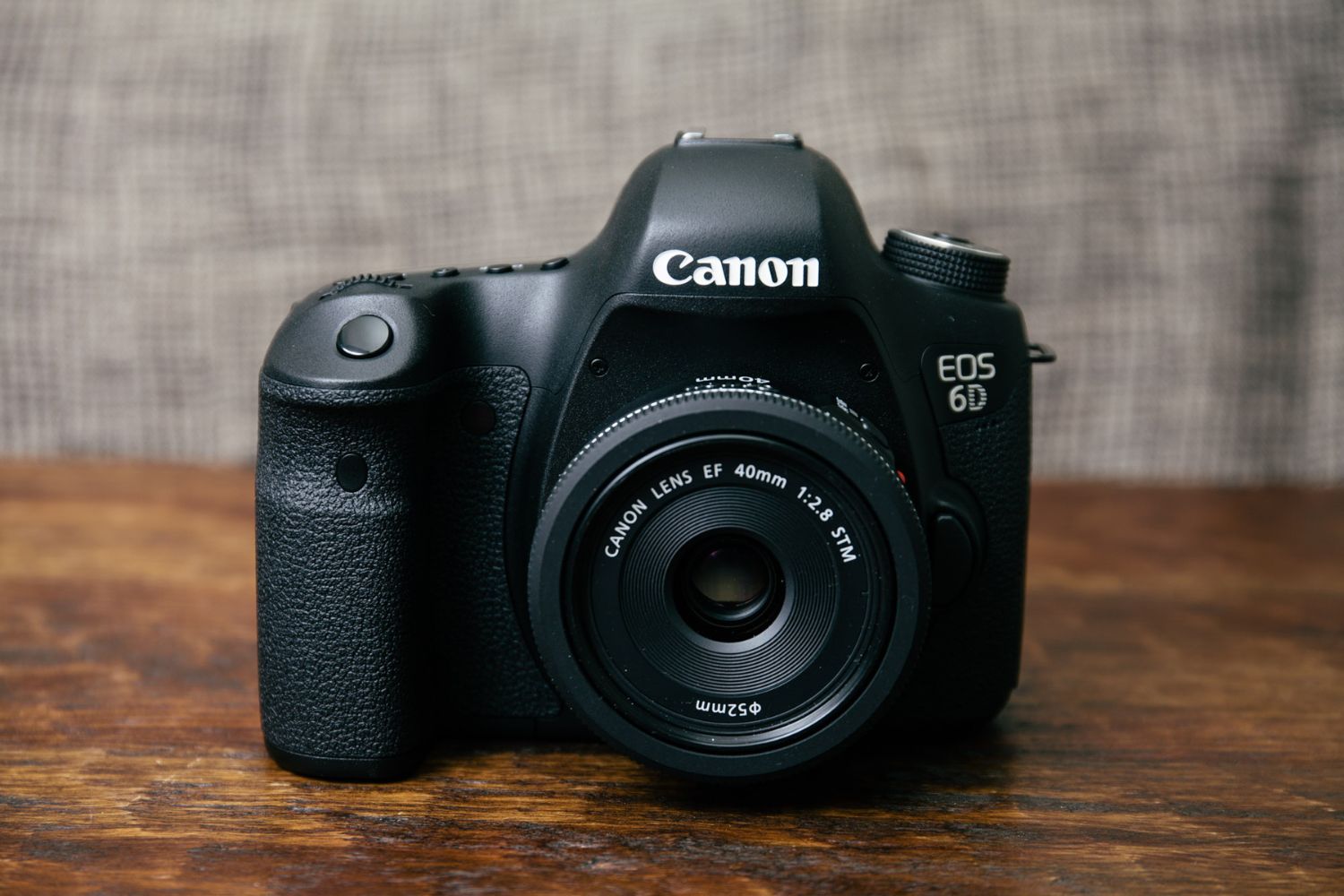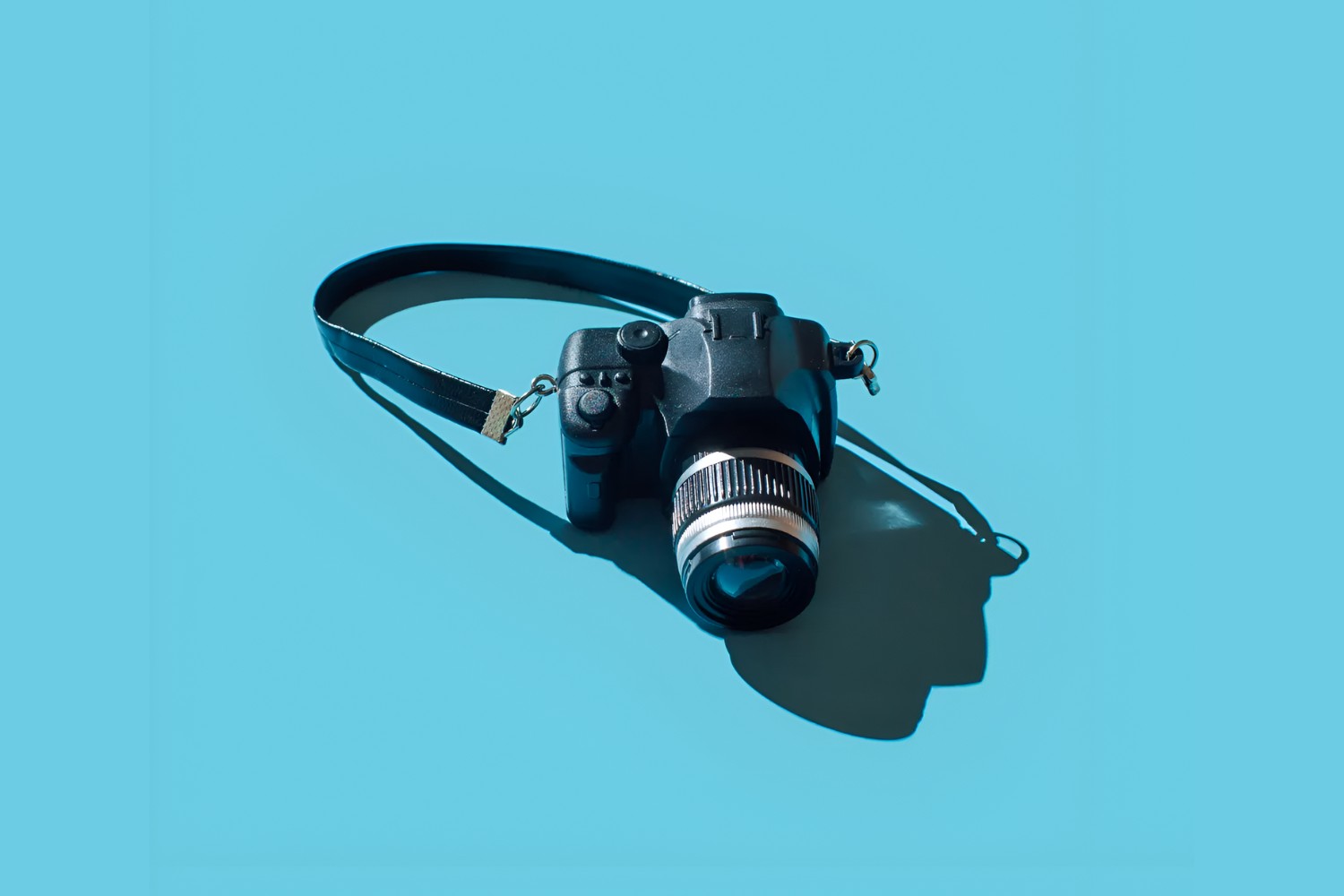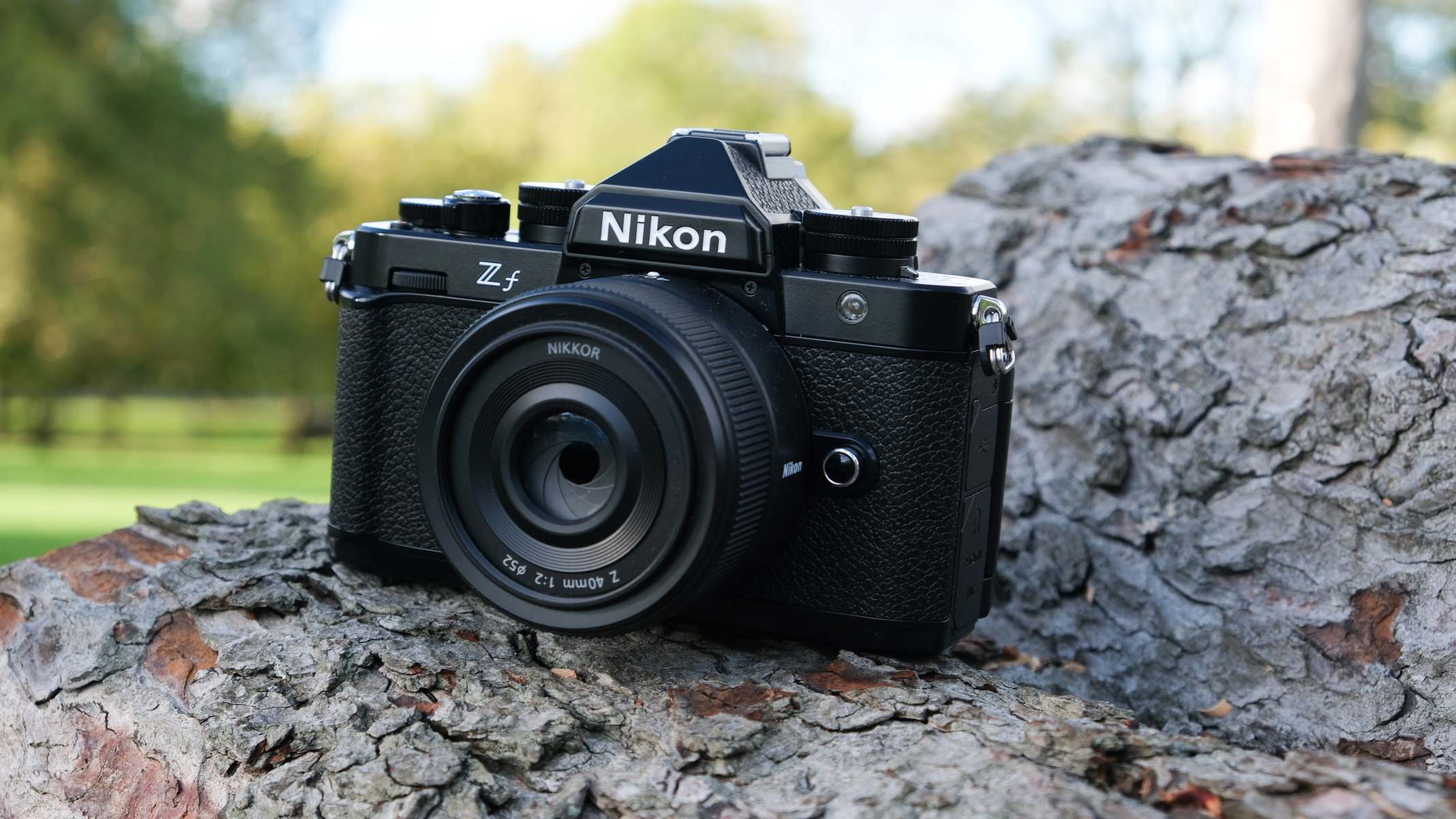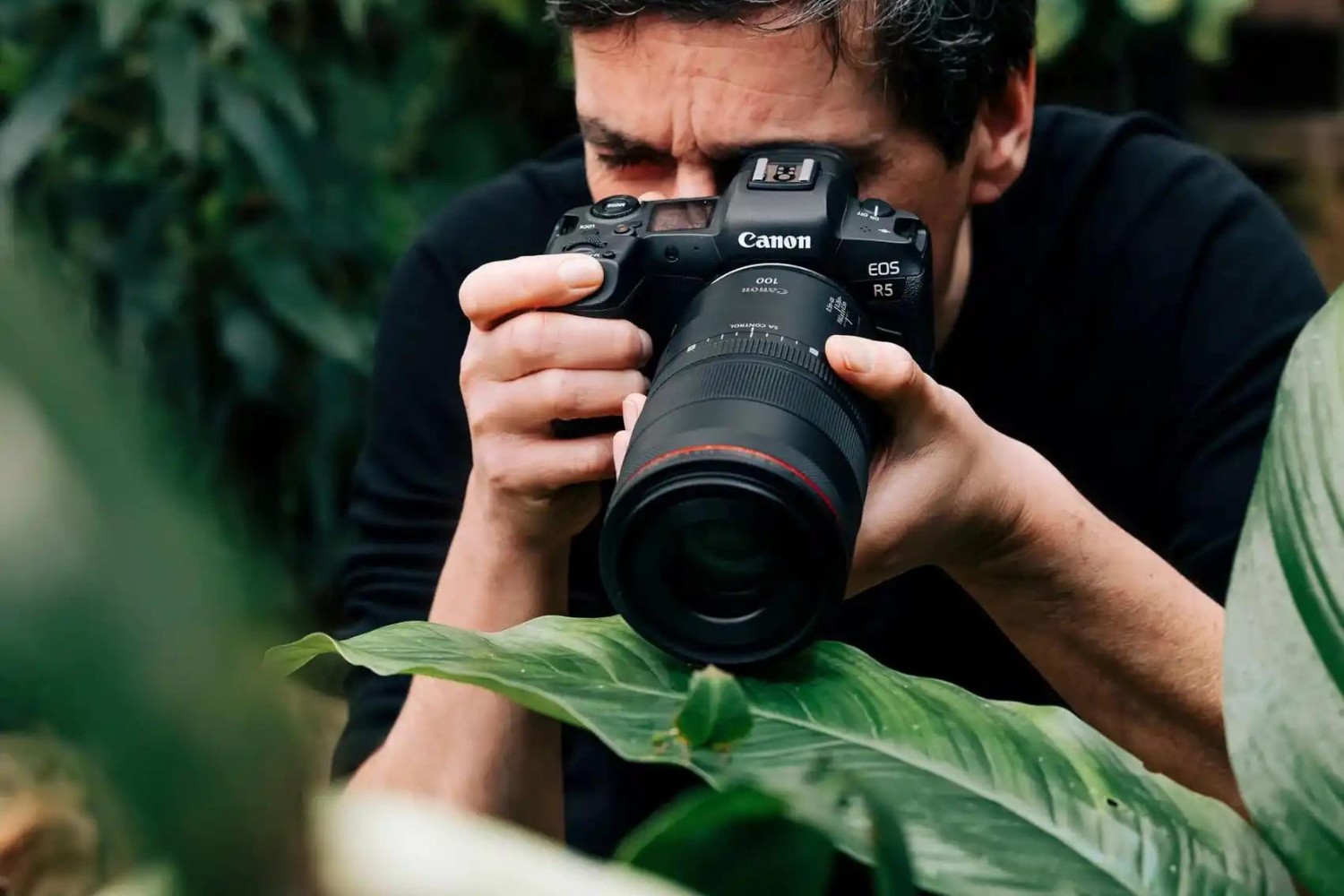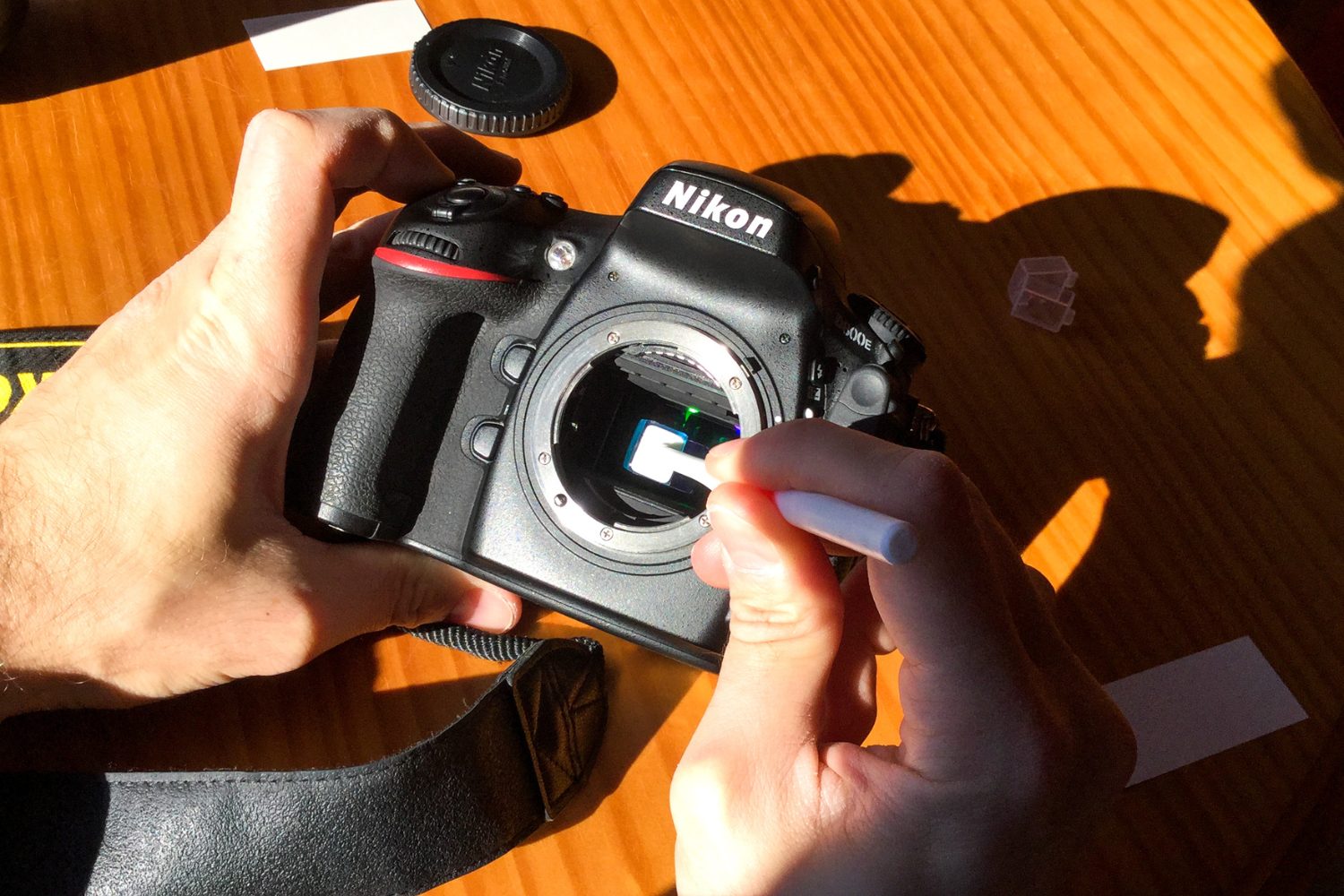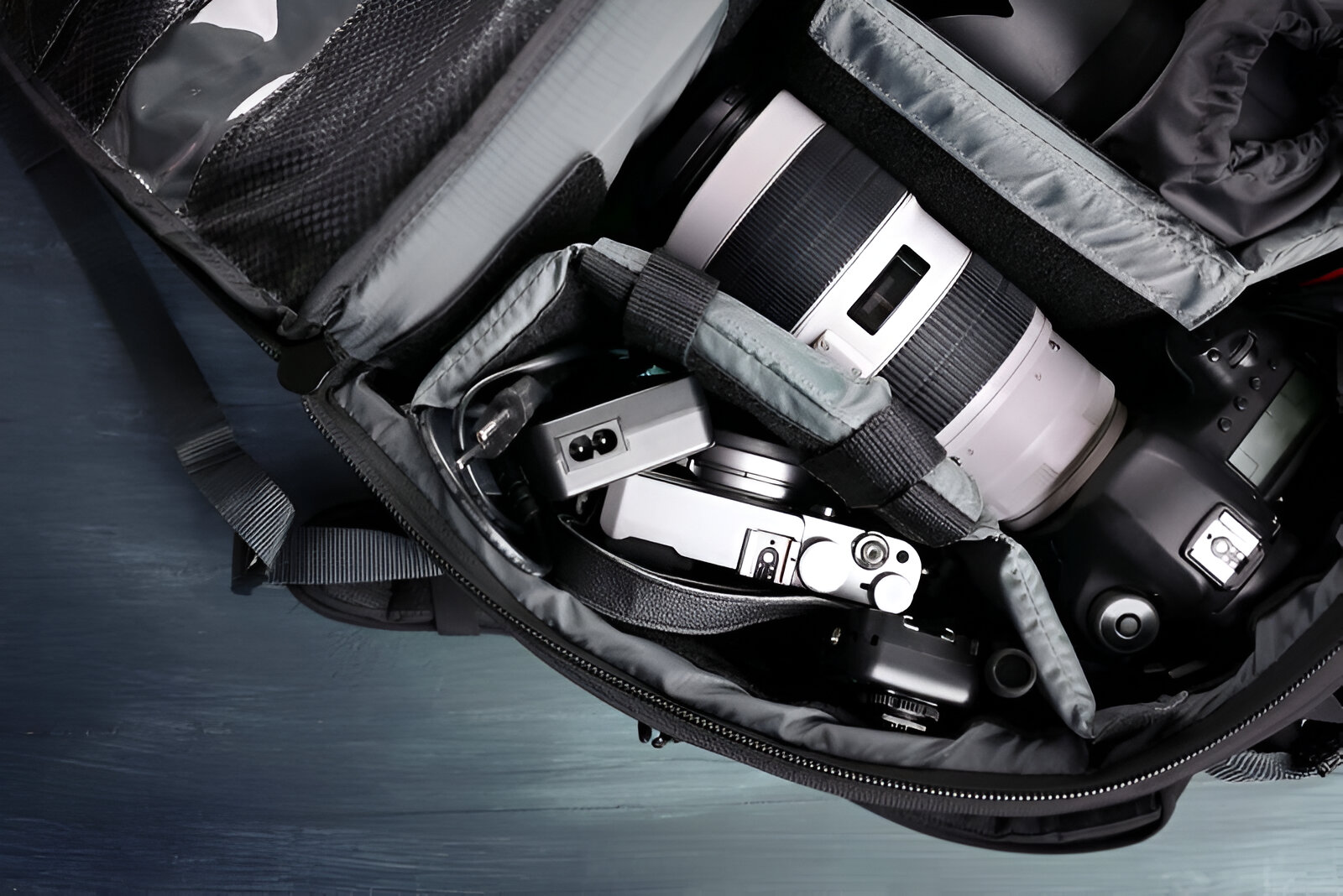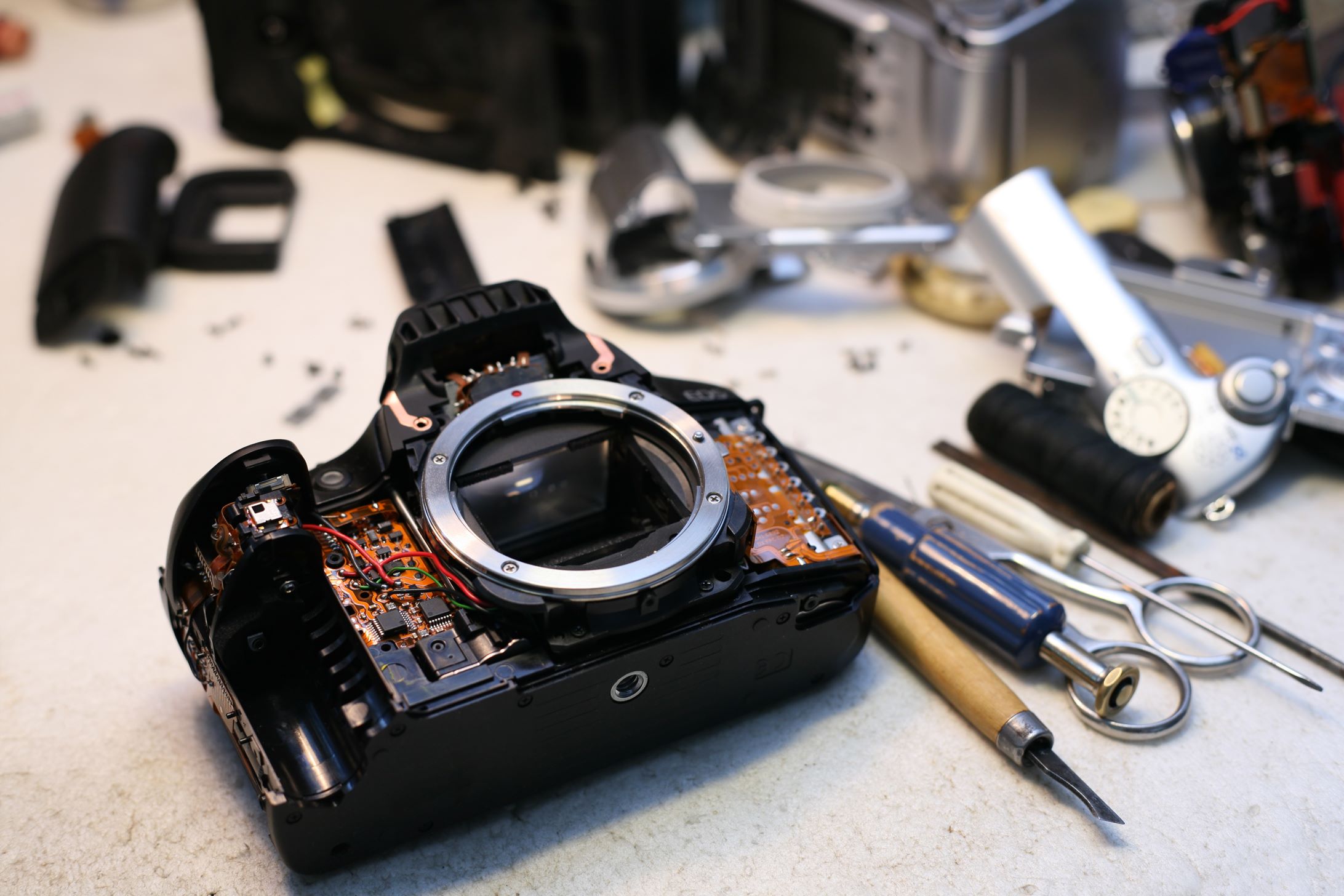Introduction
Introduction
When it comes to capturing stunning images with unparalleled precision and clarity, nothing quite compares to the prowess of a Digital Single-Lens Reflex (DSLR) camera. These sophisticated pieces of photographic equipment have revolutionized the art of image-making, empowering both amateur enthusiasts and professional photographers to unleash their creativity and elevate their craft to new heights. From superior image quality to advanced features, a DSLR camera offers a myriad of benefits that set it apart from other types of cameras.
The superior image quality produced by a DSLR camera is a defining feature that sets it apart from its counterparts. Equipped with larger image sensors, typically ranging from APS-C to full-frame, DSLRs excel in capturing intricate details, vibrant colors, and impressive dynamic range. This results in images that are rich in texture and depth, allowing photographers to convey their artistic vision with unparalleled fidelity.
Another distinguishing factor is the ability to interchange lenses, which grants photographers the flexibility to adapt to diverse shooting scenarios. Whether it's a wide-angle lens for expansive landscapes, a telephoto lens for capturing distant subjects, or a macro lens for intricate close-ups, the versatility of interchangeable lenses empowers photographers to expand their creative horizons and capture images with varying perspectives and visual impact.
Furthermore, the manual controls of a DSLR camera provide photographers with precise command over settings such as aperture, shutter speed, and ISO, enabling them to fine-tune every aspect of the image-capturing process. This level of control is invaluable in achieving the desired exposure, depth of field, and motion effects, allowing photographers to tailor their settings to suit the specific demands of each photographic endeavor.
The optical viewfinder of a DSLR camera offers a direct, real-time view of the scene, providing a natural and immersive shooting experience that is unparalleled by electronic viewfinders. This optical clarity empowers photographers to compose their shots with precision, anticipate decisive moments, and maintain a strong connection with the subject, resulting in images that encapsulate the true essence of the moment.
The remarkable autofocus speed of DSLR cameras ensures that fleeting moments are captured with razor-sharp precision, making them indispensable for action photography, sports, and wildlife. The ability to swiftly and accurately lock focus on subjects empowers photographers to seize the decisive instant with confidence and clarity, immortalizing split-second occurrences with remarkable detail.
In low-light conditions, DSLR cameras shine, delivering exceptional performance that allows photographers to capture stunning images even in challenging environments. The larger sensors and advanced noise reduction capabilities of DSLRs enable them to produce clean, low-noise images in dimly lit settings, expanding the creative possibilities for photographers in diverse lighting conditions.
Moreover, the robust build quality and durability of DSLR cameras make them reliable companions in the field, capable of withstanding the rigors of demanding environments and inclement weather. This resilience ensures that photographers can pursue their passion without hesitation, knowing that their equipment is designed to endure the challenges of professional use.
In addition to these fundamental attributes, DSLR cameras are equipped with an array of advanced features and customization options, ranging from multiple exposure modes and in-camera editing to wireless connectivity and remote shooting capabilities. These features empower photographers to push the boundaries of their creativity and streamline their workflow, making the DSLR a versatile and indispensable tool for visual storytelling.
In essence, the unique combination of superior image quality, interchangeable lenses, manual controls, optical viewfinders, fast autofocus, low-light performance, durability, and advanced features collectively distinguish DSLR cameras as a breed apart, elevating them to the pinnacle of photographic excellence. As we delve deeper into each of these facets, we will uncover the remarkable capabilities and artistic potential that define the allure of DSLR photography.
Superior Image Quality
One of the most compelling reasons to choose a DSLR camera is its ability to deliver superior image quality, setting a benchmark for precision, detail, and color reproduction in the realm of digital photography. At the heart of this capability lies the larger image sensor employed in DSLRs, which plays a pivotal role in capturing images with exceptional clarity, dynamic range, and low-light performance.
The larger image sensor, typically ranging from APS-C to full-frame, allows DSLR cameras to gather more light and detail, resulting in images that exhibit remarkable fidelity and nuance. This enhanced light-capturing capability translates into images with reduced noise, greater tonal gradation, and an impressive level of detail, making DSLR photography the preferred choice for professionals and enthusiasts who demand uncompromising image quality.
Furthermore, the larger sensor size enables DSLR cameras to excel in rendering shallow depth of field, allowing photographers to create captivating portraits with beautifully blurred backgrounds and compelling subject isolation. This aesthetic quality, often referred to as the “bokeh,” adds a dimension of artistry to images, enhancing their visual impact and drawing attention to the primary subject in a compelling manner.
Moreover, the dynamic range of DSLR images is notably wide, preserving intricate details in both highlights and shadows. This characteristic empowers photographers to capture scenes with high contrast and challenging lighting conditions, confident in the knowledge that the DSLR’s sensor can faithfully reproduce the full spectrum of tones, textures, and nuances present in the scene.
Color reproduction is another area where DSLR cameras excel, delivering rich, accurate hues and natural skin tones that resonate with a lifelike vibrancy. The meticulous color science and processing capabilities of DSLRs ensure that images are imbued with a captivating realism, allowing photographers to convey the true essence of the scene with remarkable fidelity.
Additionally, the superior image quality of DSLR cameras extends to their ability to capture fine details with exceptional sharpness and clarity. Whether it’s the intricate textures of a landscape, the delicate features of a portrait, or the subtle nuances of a still life composition, the high-resolution images produced by DSLRs preserve the intricacies of the subject with breathtaking precision.
Ultimately, the superior image quality offered by DSLR cameras is a testament to their unwavering commitment to uncompromising excellence, empowering photographers to capture images with a level of fidelity, nuance, and visual impact that is unparalleled in the realm of digital photography. This hallmark of quality serves as a cornerstone of DSLR photography, underpinning its enduring appeal and setting the standard for excellence in image-making.
Interchangeable Lenses
The versatility and creative potential of a DSLR camera are greatly amplified by its ability to accommodate interchangeable lenses, offering photographers an expansive array of options to suit diverse shooting scenarios and artistic visions. This hallmark feature of DSLRs empowers photographers to transcend the limitations of a fixed lens and explore a rich tapestry of focal lengths, apertures, and optical characteristics, unlocking a world of creative possibilities.
One of the primary advantages of interchangeable lenses is the ability to adapt to varying perspectives and compositions, allowing photographers to tailor their lens selection to the specific requirements of each photographic endeavor. Whether it’s capturing sweeping landscapes, intimate portraits, distant wildlife, or detailed macro subjects, the ability to choose the most suitable lens for the task at hand is a transformative capability that enhances the creative vision and expressive range of photographers.
Furthermore, the diverse range of focal lengths available in interchangeable lenses enables photographers to explore different visual narratives and compositional styles, from expansive wide-angle views that encompass vast vistas to telephoto perspectives that isolate distant subjects with striking intimacy. This flexibility in focal length empowers photographers to craft images that resonate with their unique artistic sensibilities, allowing them to convey their visual stories with a captivating sense of depth and perspective.
The aperture control offered by interchangeable lenses is another pivotal aspect that enriches the creative potential of DSLR photography. The ability to select different apertures, from wide open for shallow depth of field to narrow for expansive sharpness, grants photographers precise command over the depth of field and background blur in their images, enabling them to sculpt the visual impact of their compositions with exquisite control and artistry.
Moreover, the optical characteristics of interchangeable lenses, such as unique rendering qualities, distinct bokeh patterns, and specialized optical designs, imbue each lens with a distinctive visual signature, allowing photographers to infuse their images with a personalized aesthetic that reflects their individual style and creative intent. This diversity of optical characteristics fosters a rich tapestry of visual expression, empowering photographers to craft images that resonate with a compelling and distinctive visual language.
Additionally, the option to utilize specialized lenses, such as macro lenses for close-up photography, tilt-shift lenses for perspective control, and fast prime lenses for low-light performance, expands the creative horizons of photographers, offering them the tools to explore new genres, techniques, and visual frontiers. This versatility in lens selection ensures that photographers can continually evolve and diversify their artistic practice, embracing new creative challenges with confidence and enthusiasm.
In essence, the ability to interchange lenses is a cornerstone of the DSLR experience, offering photographers a boundless realm of creative exploration and expressive potential. This feature underscores the enduring allure of DSLR photography, empowering photographers to cultivate a diverse and personalized toolkit of lenses that align with their artistic vision, allowing them to capture images with a depth, nuance, and visual impact that is uniquely their own.
Manual Controls
The precise and intuitive manual controls of a DSLR camera bestow photographers with a level of command and creative autonomy that is unparalleled, enabling them to meticulously fine-tune every aspect of the image-capturing process to achieve their desired artistic vision. This hands-on approach to photography empowers photographers to exert precise control over settings such as aperture, shutter speed, and ISO, fostering a deeply immersive and personalized shooting experience that is synonymous with the art of photography.
One of the fundamental pillars of manual control in DSLR photography is the ability to adjust the aperture, allowing photographers to regulate the amount of light entering the camera and dictate the depth of field in their images. This aperture control is instrumental in shaping the visual narrative of a photograph, enabling photographers to create compositions with selective focus, captivating bokeh, and a nuanced interplay of sharpness and blur that adds depth and dimension to their images.
Similarly, the manual adjustment of shutter speed empowers photographers to freeze fast-paced action with swift exposures or convey a sense of motion with deliberate blurring effects, offering a spectrum of creative possibilities to portray movement, energy, and dynamism in their images. This precise control over shutter speed allows photographers to capture decisive moments with impeccable timing, immortalizing fleeting instants with striking clarity and visual impact.
Moreover, the manual selection of ISO sensitivity provides photographers with the flexibility to adapt to varying lighting conditions, empowering them to achieve optimal exposure and image quality in diverse environments. Whether it’s capturing low-light scenes with minimal noise or preserving fine details in brightly lit settings, the ability to fine-tune ISO settings ensures that photographers can maintain exceptional image quality across a spectrum of lighting scenarios.
Additionally, the manual control over white balance enables photographers to accurately capture the true colors and tonal nuances of a scene, ensuring that the images faithfully represent the ambient lighting conditions and convey the intended mood and atmosphere with precision. This meticulous white balance adjustment is instrumental in achieving color accuracy and consistency, allowing photographers to convey the authentic visual essence of the scene with fidelity.
Furthermore, the manual focus capability of DSLR lenses empowers photographers to exert precise control over the point of focus, enabling them to fine-tune the sharpness and depth of field in their images with meticulous attention to detail. This tactile and immersive approach to focusing fosters a deeper connection between the photographer and the subject, allowing for a heightened level of engagement and intentionality in the image-making process.
In essence, the manual controls of a DSLR camera serve as a conduit for creative expression, offering photographers a rich tapestry of technical tools to shape the visual narrative of their images with precision and artistry. This hands-on approach to photography underscores the enduring appeal of DSLR cameras, empowering photographers to craft images that resonate with a level of personalization, nuance, and expressive depth that is synonymous with the art of visual storytelling.
Optical Viewfinder
The optical viewfinder of a DSLR camera stands as a quintessential feature that distinguishes it from other types of digital cameras, offering photographers a direct, real-time view of the scene that is unmediated by electronic displays. This optical clarity and immediacy provide photographers with an immersive and authentic shooting experience, allowing them to engage with the scene in a visceral and intuitive manner that is synonymous with the art of photography.
One of the primary advantages of an optical viewfinder is the natural and unadulterated representation of the scene, providing photographers with a direct line of sight that faithfully captures the nuances of light, color, and composition without the intermediary layer of electronic displays. This unfiltered view fosters a deep sense of connection and engagement with the subject, enabling photographers to perceive the scene with unaltered clarity and authenticity.
Furthermore, the optical viewfinder empowers photographers to compose their shots with precision and intentionality, allowing for a seamless alignment between the visual narrative they envision and the image they capture. This direct and immediate feedback facilitates a sense of anticipation and timing, enabling photographers to seize decisive moments with confidence and clarity, resulting in images that encapsulate the true essence of the scene.
The optical clarity of a DSLR’s viewfinder ensures that photographers can accurately assess critical elements such as focus, exposure, and composition in real time, allowing for swift adjustments and refinements that are integral to the art of image-making. This level of visual immediacy fosters a deeply immersive shooting experience, enabling photographers to maintain a strong connection with the subject and the scene, resulting in images that resonate with a genuine sense of authenticity and presence.
Moreover, the optical viewfinder of a DSLR camera offers a seamless and uninterrupted view of the scene, free from the lag or refresh delays often associated with electronic displays. This instantaneous and continuous visual feedback ensures that photographers can maintain a fluid and uninterrupted connection with the subject, empowering them to anticipate and capture fleeting moments with impeccable timing and precision.
Additionally, the optical viewfinder of a DSLR camera operates independently of battery power, ensuring that photographers can continue to compose and capture images even in situations where electronic displays may be compromised. This resilience and autonomy underscore the reliability and durability of DSLR cameras, making them dependable tools for photography in diverse environments and conditions.
In essence, the optical viewfinder of a DSLR camera embodies the essence of traditional photography, offering photographers a direct and unfiltered window to the world that fosters a deeply immersive and authentic shooting experience. This hallmark feature underscores the enduring appeal of DSLR cameras, empowering photographers to engage with their subjects and scenes with a level of immediacy, authenticity, and connection that is synonymous with the art of visual storytelling.
Fast Autofocus
The fast and precise autofocus capabilities of a DSLR camera stand as a testament to its proficiency in capturing fleeting moments with unparalleled speed and accuracy, making it an indispensable tool for a wide array of photographic genres, including sports, wildlife, and action photography. This hallmark feature empowers photographers to seize decisive instants with confidence and clarity, ensuring that every moment is immortalized with razor-sharp precision and impeccable focus.
One of the defining attributes of fast autofocus in DSLR cameras is its ability to swiftly and decisively lock focus on subjects, ensuring that fleeting moments are captured with impeccable sharpness and clarity. This rapid and assured autofocus performance enables photographers to track moving subjects with precision, empowering them to capture dynamic scenes with a level of detail and fidelity that is synonymous with the art of visual storytelling.
Furthermore, the advanced autofocus systems employed in DSLR cameras are equipped with a multitude of focus points, allowing for comprehensive coverage of the frame and ensuring that subjects can be tracked and captured with precision, regardless of their position within the composition. This expansive and responsive autofocus coverage provides photographers with the flexibility to compose their shots with confidence, knowing that the autofocus system can adeptly capture subjects across the entire frame.
The predictive autofocus capabilities of DSLR cameras enable photographers to anticipate and capture moments of action with remarkable precision, ensuring that subjects in motion are tracked and focused with unwavering accuracy. This predictive autofocus performance is instrumental in genres such as sports and wildlife photography, where the ability to capture fast-moving subjects with precision is paramount to conveying the energy and dynamism of the scene.
Moreover, the low-light autofocus performance of DSLR cameras ensures that photographers can capture sharp and clear images even in challenging lighting conditions, allowing for a seamless transition between diverse shooting environments without compromising on autofocus speed and accuracy. This capability is particularly valuable in situations where fast and reliable autofocus performance is essential, such as event photography and low-light portraiture.
Additionally, the continuous autofocus tracking capabilities of DSLR cameras enable photographers to maintain sharp focus on moving subjects, ensuring that the intended subject remains crisply defined and in focus throughout the duration of the capture. This continuous autofocus performance is invaluable in scenarios where subjects are in motion, allowing photographers to track and capture dynamic scenes with unwavering precision and clarity.
In essence, the fast autofocus capabilities of DSLR cameras embody the essence of precision and speed, empowering photographers to capture fleeting moments with remarkable clarity and confidence. This hallmark feature underscores the enduring appeal of DSLR cameras, positioning them as indispensable tools for photographers who demand swift and assured autofocus performance across a diverse spectrum of shooting scenarios.
Low Light Performance
The low light performance of a DSLR camera stands as a testament to its exceptional capabilities in capturing stunning images even in challenging and dimly lit environments, making it a versatile and reliable tool for photographers who navigate diverse lighting conditions. This hallmark feature empowers photographers to push the boundaries of creativity, enabling them to capture compelling images with remarkable clarity and detail, regardless of the ambient light levels.
One of the primary factors that contribute to the impressive low light performance of DSLR cameras is the larger image sensor employed in these devices. The larger sensor size allows DSLRs to gather more light, resulting in images with reduced noise and enhanced sensitivity in low light conditions. This capability ensures that photographers can capture clean, high-quality images even in situations where light is scarce, expanding the creative possibilities for visual storytelling.
Furthermore, the advanced noise reduction algorithms and processing capabilities integrated into DSLR cameras enable them to produce images with minimal noise and exceptional detail, even at high ISO settings. This noise reduction prowess ensures that photographers can maintain image quality and clarity in low light environments, allowing them to capture scenes with a level of fidelity and nuance that is synonymous with the art of visual storytelling.
The wide dynamic range of DSLR images further enhances their low light performance, preserving intricate details in both highlights and shadows, even in challenging lighting conditions. This dynamic range empowers photographers to capture scenes with high contrast and nuanced tonal gradation, ensuring that the full spectrum of tones and textures is faithfully reproduced, regardless of the ambient light levels.
Moreover, the fast lenses and wide aperture options available for DSLR cameras further augment their low light performance, allowing photographers to gather more light and achieve shallow depth of field effects even in dimly lit settings. This capability enables photographers to create compelling visual narratives with captivating bokeh and selective focus, adding a dimension of artistry and depth to their low light compositions.
The manual control options available in DSLR cameras, such as the ability to adjust aperture, shutter speed, and ISO, provide photographers with the flexibility to adapt to low light environments with precision and intentionality. This level of control ensures that photographers can fine-tune their settings to achieve optimal exposure and image quality, empowering them to capture compelling images with a level of artistry and technical finesse that is synonymous with the art of photography.
In essence, the low light performance of DSLR cameras underscores their versatility and reliability in diverse shooting scenarios, ensuring that photographers can capture compelling images with remarkable clarity and detail, regardless of the ambient light levels. This hallmark feature positions DSLR cameras as indispensable tools for photographers who navigate a spectrum of lighting conditions, empowering them to push the boundaries of creativity and capture images that resonate with a captivating sense of visual depth and nuance.
Durability and Build Quality
The durability and build quality of a DSLR camera exemplify its resilience and reliability, making it a steadfast companion for photographers who navigate diverse and demanding shooting environments. This hallmark feature underscores the robust construction and enduring craftsmanship of DSLR cameras, ensuring that they can withstand the rigors of professional use and the challenges of inclement weather, offering photographers a dependable tool for visual storytelling in any situation.
One of the defining attributes of the durability of DSLR cameras is their robust construction, characterized by rugged materials and reinforced chassis that are engineered to endure the demands of professional photography. This sturdy build quality instills confidence in photographers, assuring them that their equipment can withstand the challenges of fieldwork and maintain reliable performance in diverse shooting scenarios.
Furthermore, the weather-sealing and environmental protection integrated into DSLR cameras safeguard them against the elements, ensuring that they can operate seamlessly in adverse conditions such as rain, snow, and dust. This resilience to inclement weather empowers photographers to pursue their creative vision without hesitation, knowing that their equipment is designed to withstand the challenges of outdoor photography and environmental variability.
The ergonomic design and intuitive handling of DSLR cameras further enhance their durability, providing photographers with a comfortable and secure grip that promotes stability and confidence during shooting. This ergonomic excellence ensures that photographers can maintain control and precision in their image-making process, even in dynamic and challenging shooting scenarios.
Moreover, the enduring shutter mechanisms and durable internal components of DSLR cameras contribute to their longevity and reliability, ensuring that they can sustain a high volume of shutter actuations and maintain consistent performance over extended periods of use. This reliability is instrumental in professional photography, where the ability to depend on equipment in high-pressure situations is paramount to capturing decisive moments with precision and clarity.
The robust build quality of DSLR cameras is further complemented by their compatibility with a diverse range of accessories and lenses, ensuring that photographers can expand and customize their toolkit with confidence, knowing that their equipment is designed to accommodate a spectrum of creative needs and shooting scenarios. This versatility and adaptability position DSLR cameras as enduring and dependable tools for photographers who seek a comprehensive and flexible imaging solution.
In essence, the durability and build quality of DSLR cameras embody their enduring reliability and resilience, making them steadfast companions for photographers who navigate diverse and demanding shooting environments. This hallmark feature positions DSLR cameras as indispensable tools for visual storytelling, offering photographers a dependable and enduring platform to capture images with confidence and creativity, regardless of the challenges they may encounter in their photographic endeavors.
Advanced Features
Beyond their fundamental capabilities, DSLR cameras are distinguished by a multitude of advanced features that elevate the art of photography, offering photographers a comprehensive toolkit to unleash their creativity and streamline their workflow. These innovative functionalities encompass a spectrum of capabilities, ranging from advanced metering systems and customizable controls to wireless connectivity and in-camera editing, positioning DSLR cameras as versatile and indispensable tools for visual storytelling.
One of the pivotal advanced features of DSLR cameras is their sophisticated metering systems, which utilize advanced algorithms and multi-zone metering to accurately assess and interpret the ambient light in a scene. This precise metering capability ensures that photographers can achieve optimal exposure and tonal balance in diverse lighting conditions, empowering them to capture images with a level of fidelity and nuance that resonates with the true essence of the scene.
Furthermore, the customizable controls and personalized settings available in DSLR cameras provide photographers with the flexibility to tailor their shooting experience to suit their individual preferences and shooting style. This customization empowers photographers to fine-tune their camera’s behavior, responsiveness, and control layout, ensuring that their equipment aligns seamlessly with their creative vision and technical requirements.
The in-camera editing and post-processing capabilities of DSLR cameras offer photographers a streamlined and efficient workflow, allowing them to refine and enhance their images directly within the camera. This in-camera editing functionality encompasses a range of features, including image cropping, color adjustments, and creative filters, enabling photographers to optimize their images and express their artistic vision without the need for external software or post-processing tools.
Moreover, the wireless connectivity options integrated into DSLR cameras facilitate seamless image transfer, remote shooting, and connectivity with external devices, empowering photographers to streamline their workflow and share their images with unparalleled ease and convenience. This wireless connectivity capability ensures that photographers can effortlessly transfer and showcase their images, fostering a seamless integration with digital platforms and collaborative workflows.
The advanced autofocus and tracking systems of DSLR cameras offer photographers a comprehensive suite of focus modes, subject tracking capabilities, and predictive autofocus performance, ensuring that they can capture moving subjects with precision and clarity. This advanced autofocus functionality is instrumental in genres such as sports, wildlife, and action photography, allowing photographers to track and capture dynamic scenes with unwavering accuracy and visual impact.
Additionally, the high-speed continuous shooting capabilities of DSLR cameras enable photographers to capture sequences of fast-paced action with remarkable speed and precision, ensuring that they can seize decisive moments with unparalleled clarity and detail. This rapid shooting performance empowers photographers to convey the energy and dynamism of dynamic scenes, capturing split-second occurrences with breathtaking precision and visual impact.
In essence, the advanced features of DSLR cameras encompass a diverse array of capabilities that empower photographers to push the boundaries of their creativity, streamline their workflow, and capture images with a level of precision, nuance, and visual impact that is synonymous with the art of visual storytelling. This comprehensive suite of advanced functionalities positions DSLR cameras as versatile and indispensable tools for photographers who seek to elevate their craft and unleash their creative potential in every photographic endeavor.
Conclusion
In conclusion, the Digital Single-Lens Reflex (DSLR) camera stands as an enduring icon in the realm of photography, embodying a convergence of advanced technology, enduring craftsmanship, and unparalleled creative potential. From its superior image quality and interchangeable lenses to its manual controls, optical viewfinder, fast autofocus, low light performance, durability, and advanced features, the DSLR camera represents a pinnacle of photographic excellence, empowering photographers to capture images with precision, artistry, and authenticity.
The superior image quality produced by DSLR cameras is a testament to their unwavering commitment to uncompromising excellence, delivering images with exceptional clarity, dynamic range, and color reproduction that resonate with a lifelike vibrancy. This superior image quality serves as a cornerstone of DSLR photography, setting a benchmark for precision, detail, and visual impact that is synonymous with the art of visual storytelling.
Furthermore, the ability to interchange lenses empowers photographers to transcend the limitations of a fixed lens and explore a rich tapestry of focal lengths, apertures, and optical characteristics, unlocking a world of creative possibilities and visual expression. This versatility in lens selection ensures that photographers can capture images with a depth, nuance, and visual impact that is uniquely their own, aligning seamlessly with their artistic vision and expressive range.
The precise and intuitive manual controls of DSLR cameras offer photographers a level of command and creative autonomy that is unparalleled, enabling them to meticulously fine-tune every aspect of the image-capturing process to achieve their desired artistic vision. This hands-on approach to photography fosters a deeply immersive and personalized shooting experience, allowing photographers to exert precise control over settings such as aperture, shutter speed, and ISO with confidence and intentionality.
Moreover, the optical viewfinder of a DSLR camera provides photographers with an immersive and authentic shooting experience, allowing for a seamless alignment between the visual narrative they envision and the image they capture. This direct and immediate feedback fosters a sense of anticipation and timing, enabling photographers to seize decisive moments with confidence and clarity, resulting in images that encapsulate the true essence of the scene.
The fast autofocus capabilities of DSLR cameras ensure that fleeting moments are captured with unparalleled speed and accuracy, making them indispensable tools for a wide array of photographic genres, including sports, wildlife, and action photography. This hallmark feature empowers photographers to capture dynamic scenes with a level of detail and fidelity that is synonymous with the art of visual storytelling, ensuring that every moment is immortalized with razor-sharp precision and impeccable focus.
Furthermore, the low light performance, durability, and advanced features of DSLR cameras collectively underscore their versatility and reliability in diverse shooting scenarios, positioning them as steadfast companions for photographers who seek to push the boundaries of creativity and capture images with confidence and authenticity, regardless of the challenges they may encounter in their photographic endeavors.
In essence, the DSLR camera represents a timeless embodiment of technical prowess, artistic expression, and enduring reliability, offering photographers a comprehensive and enduring platform to pursue their passion for visual storytelling with unwavering precision, nuance, and visual impact.







